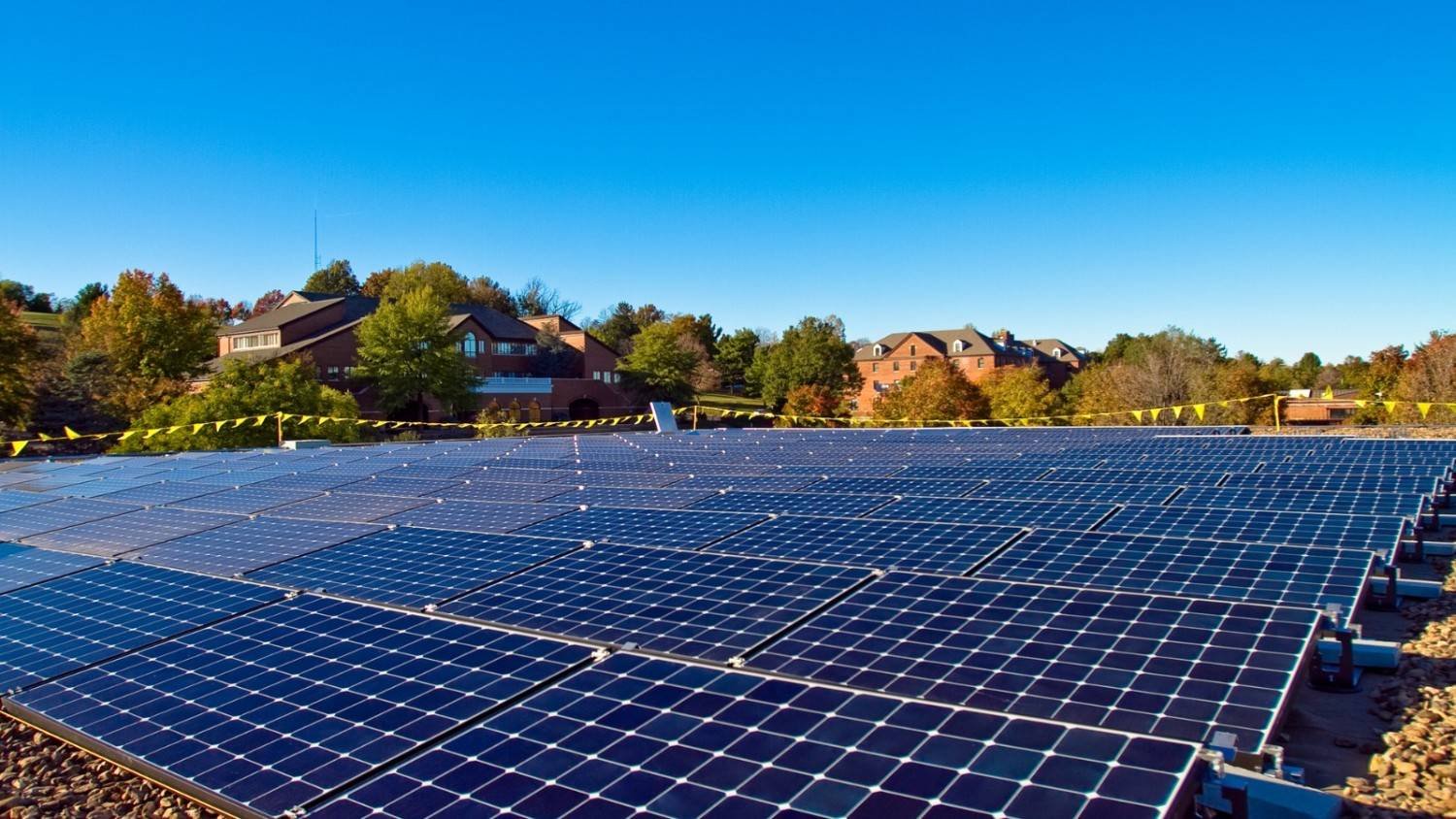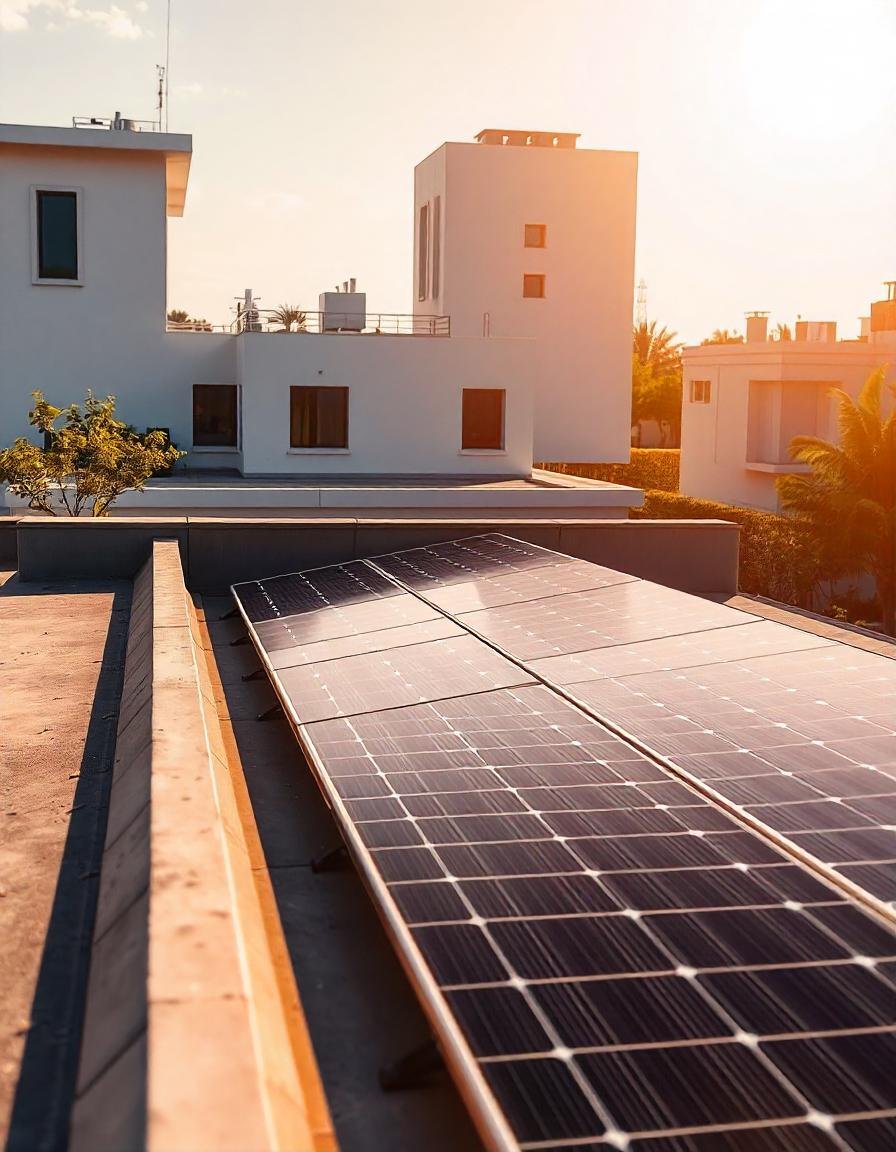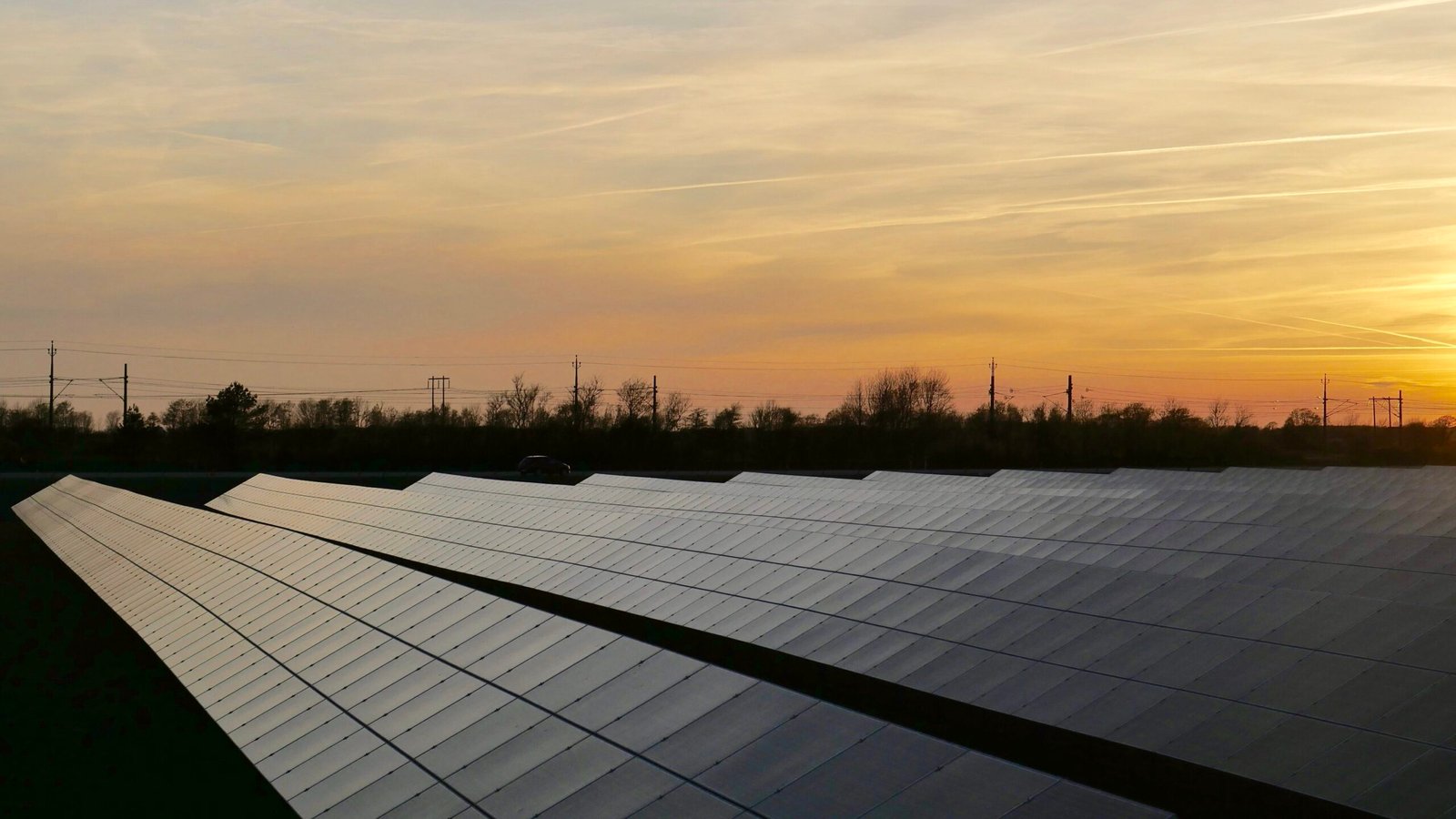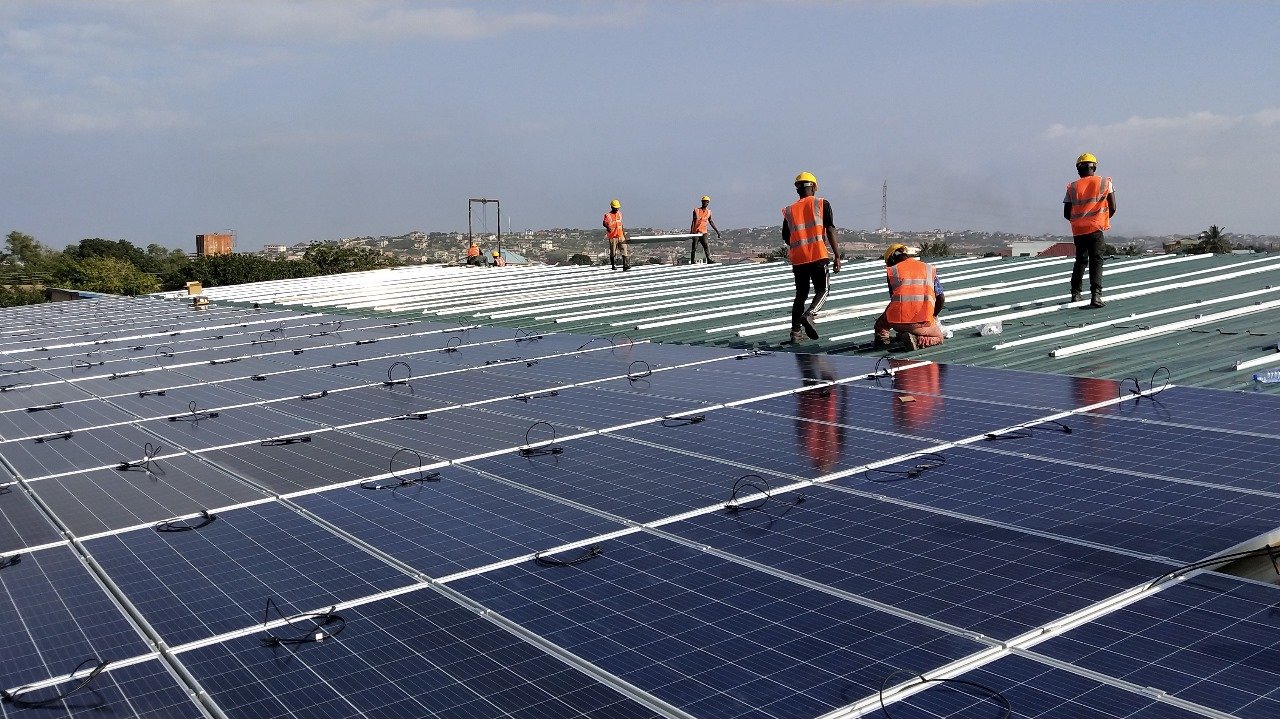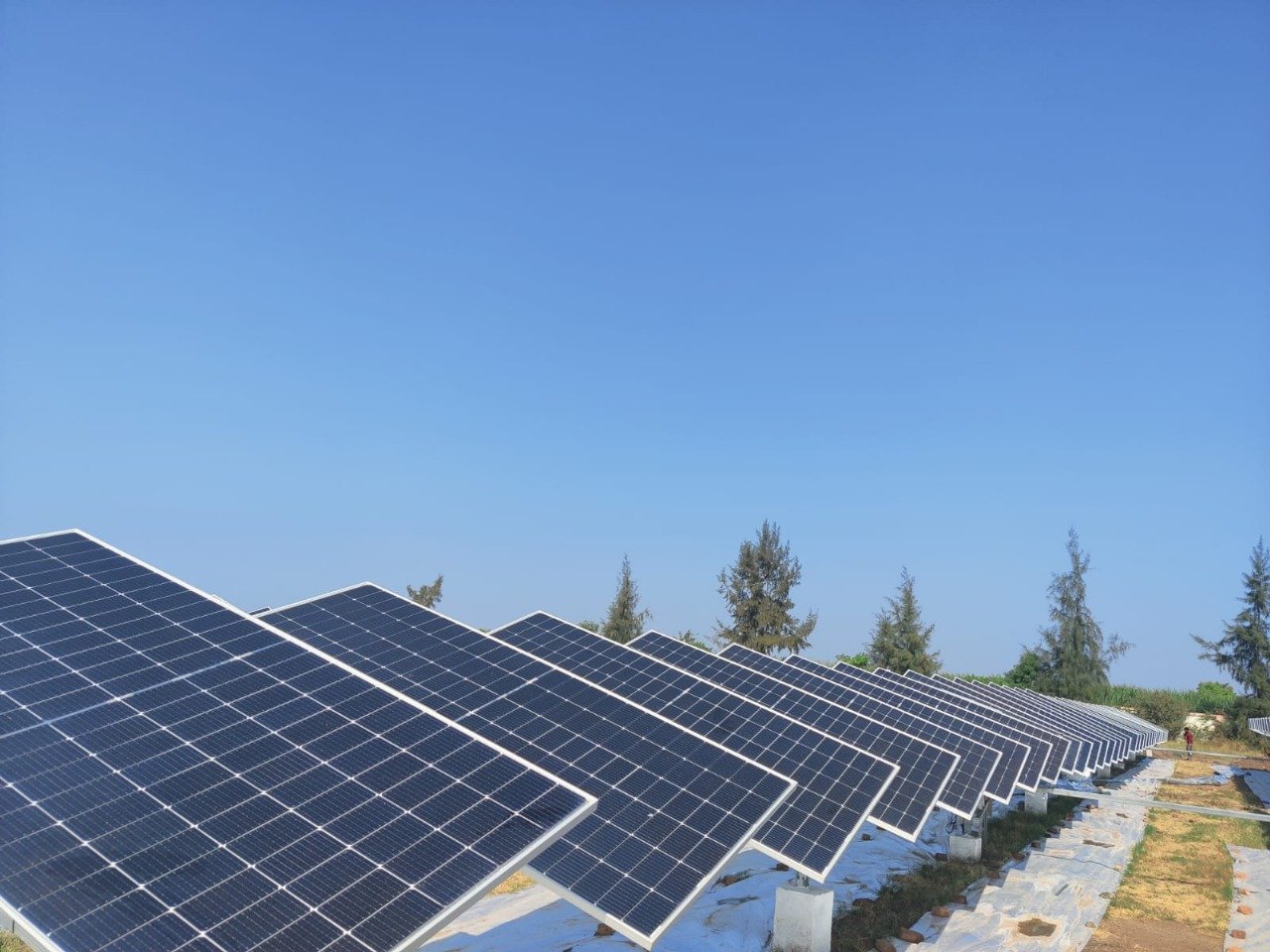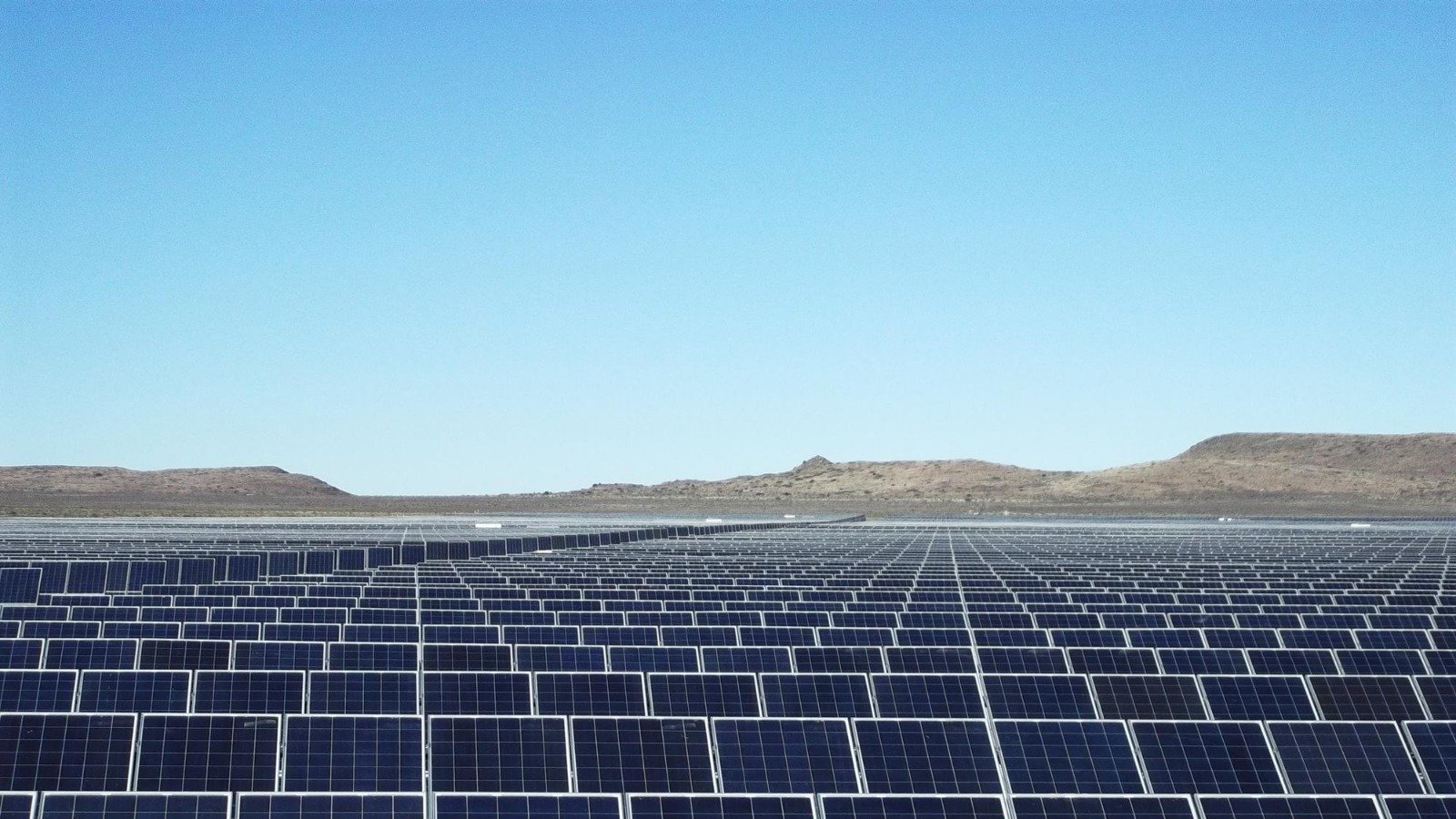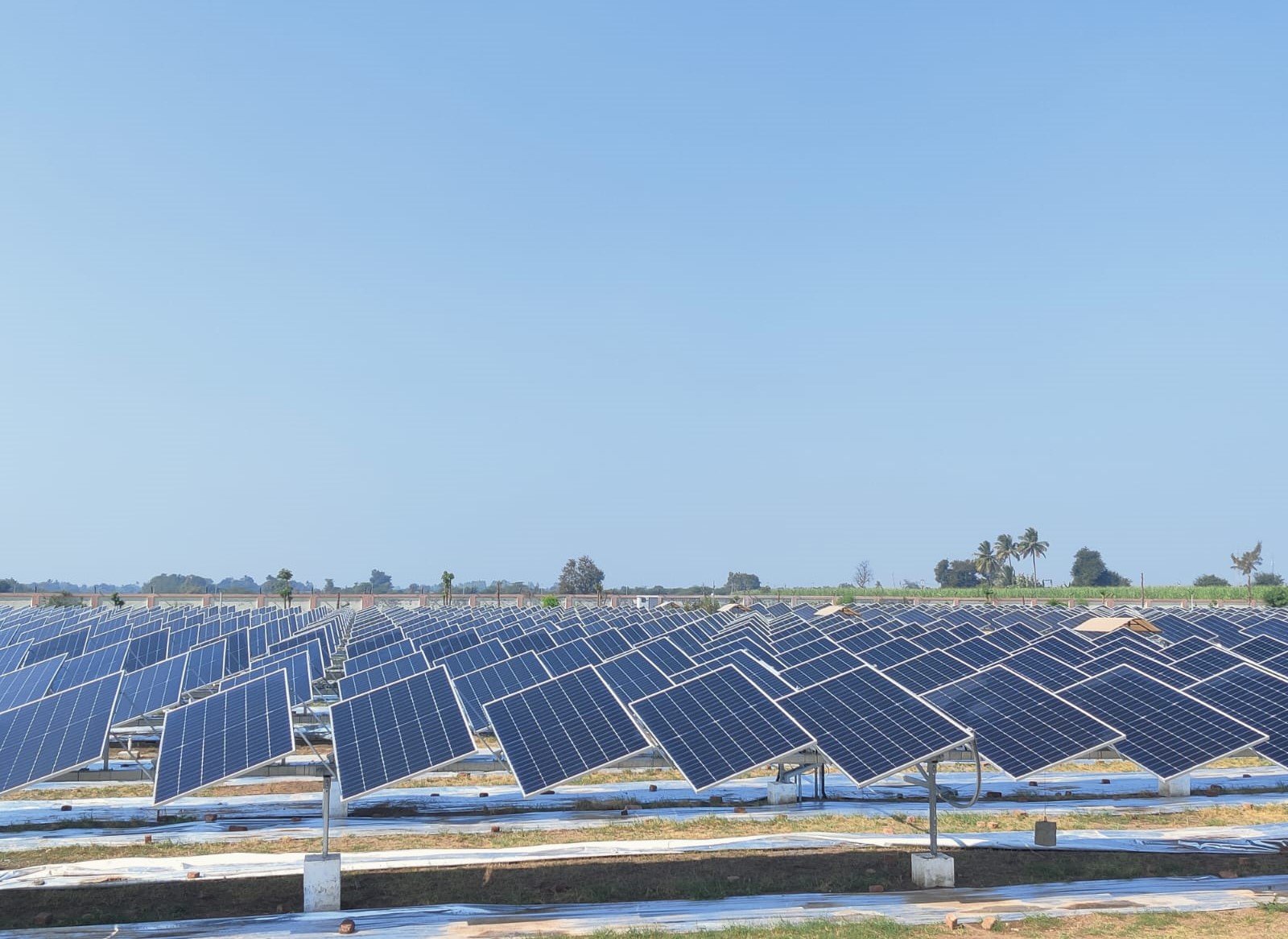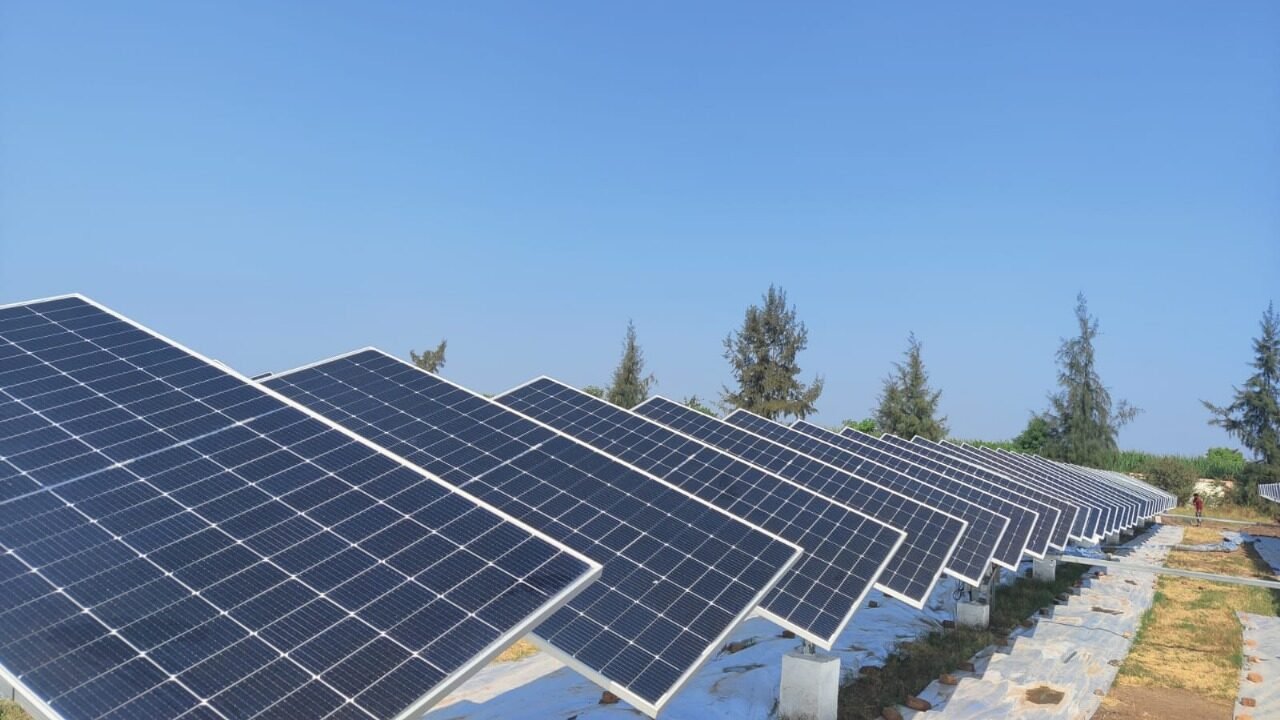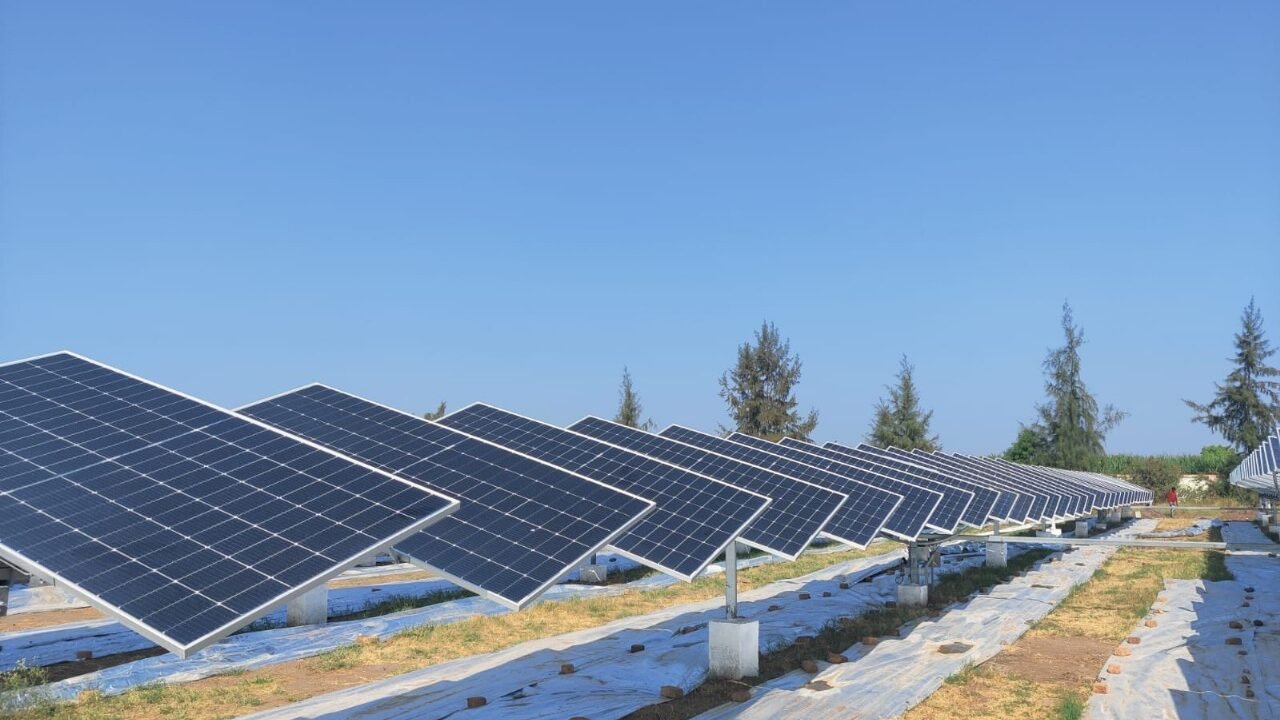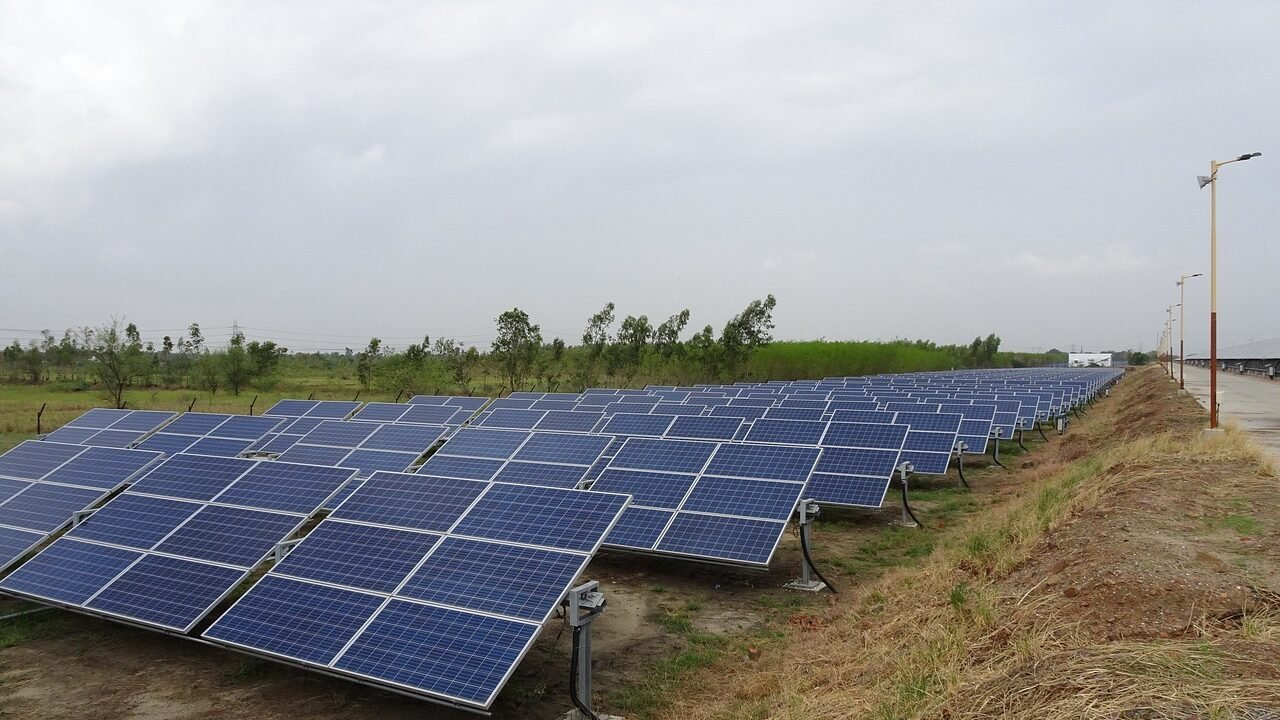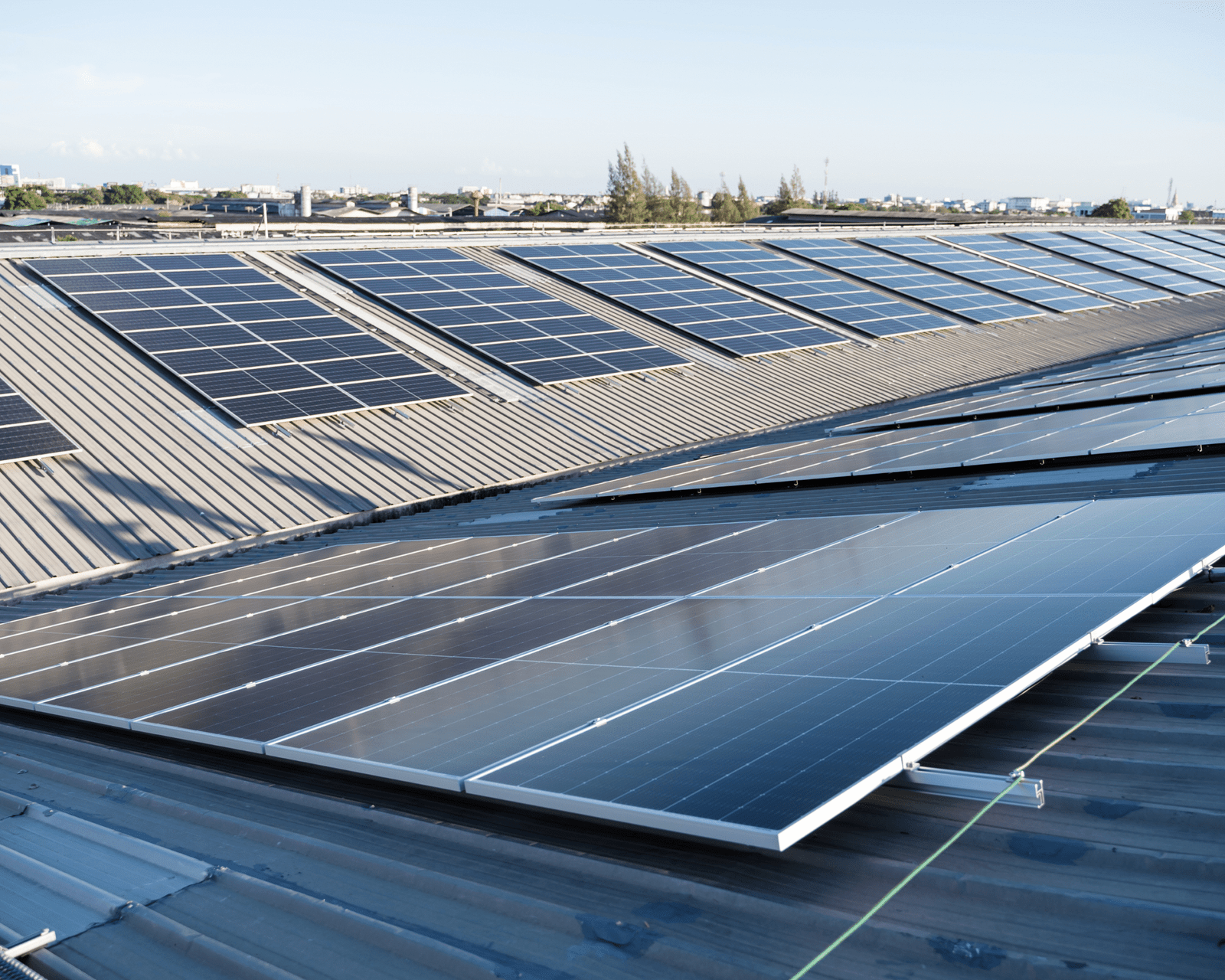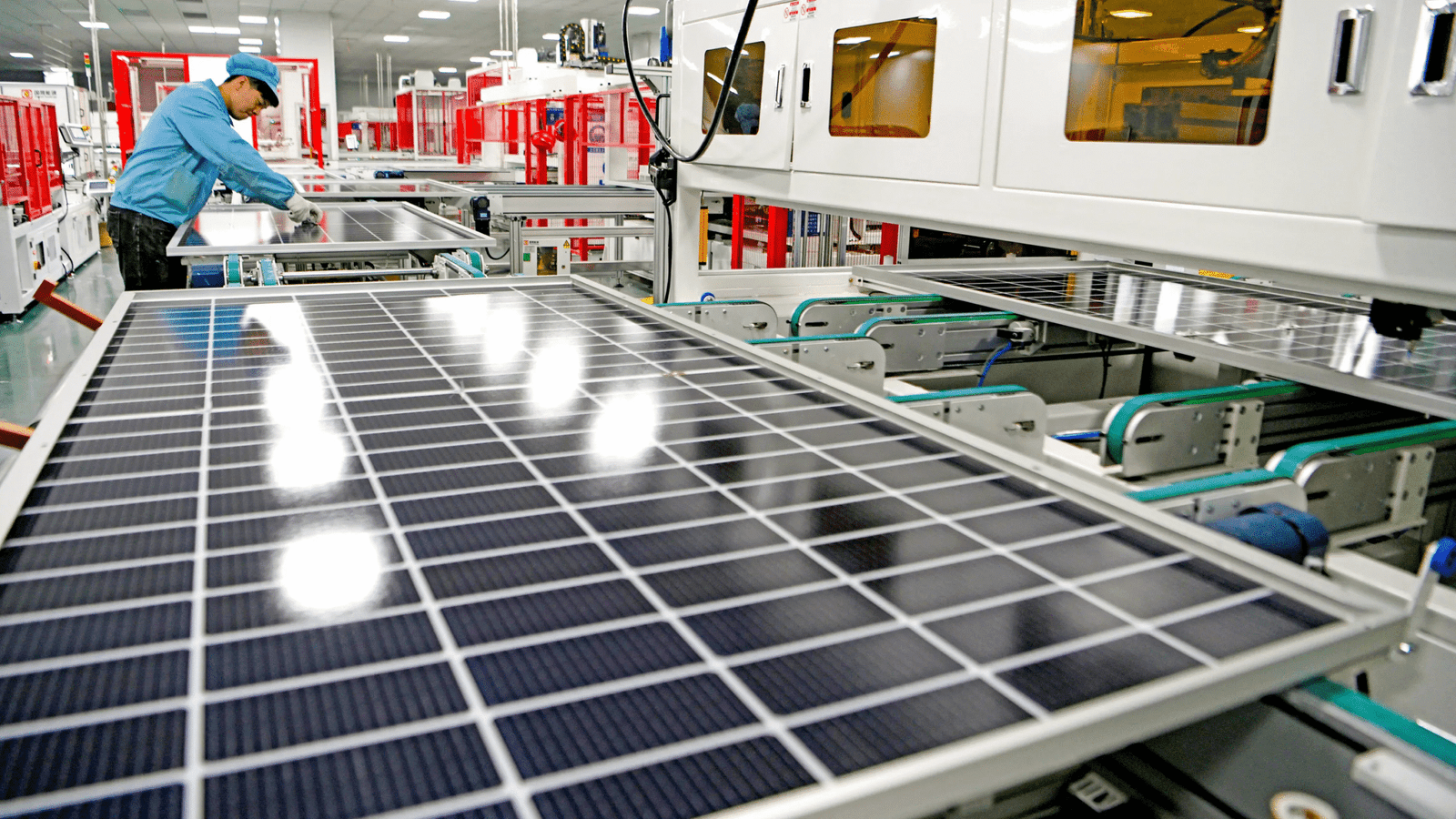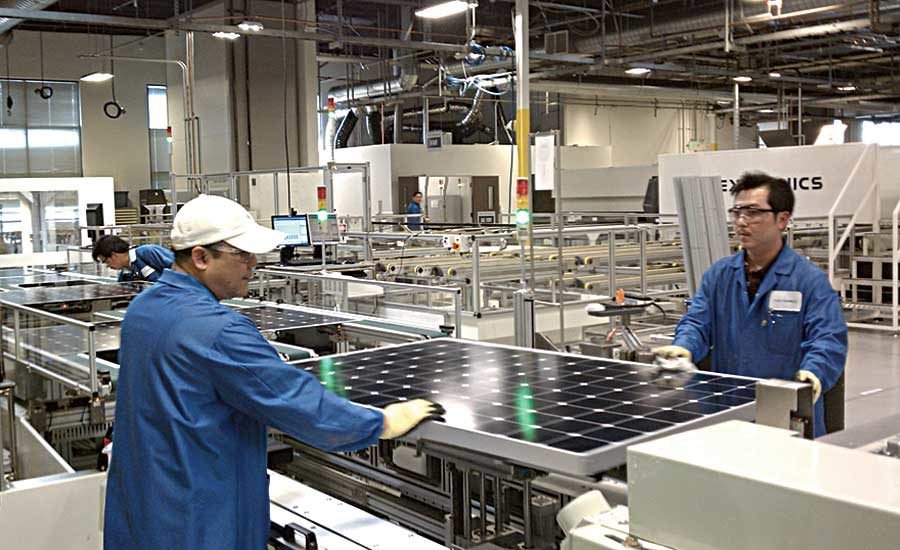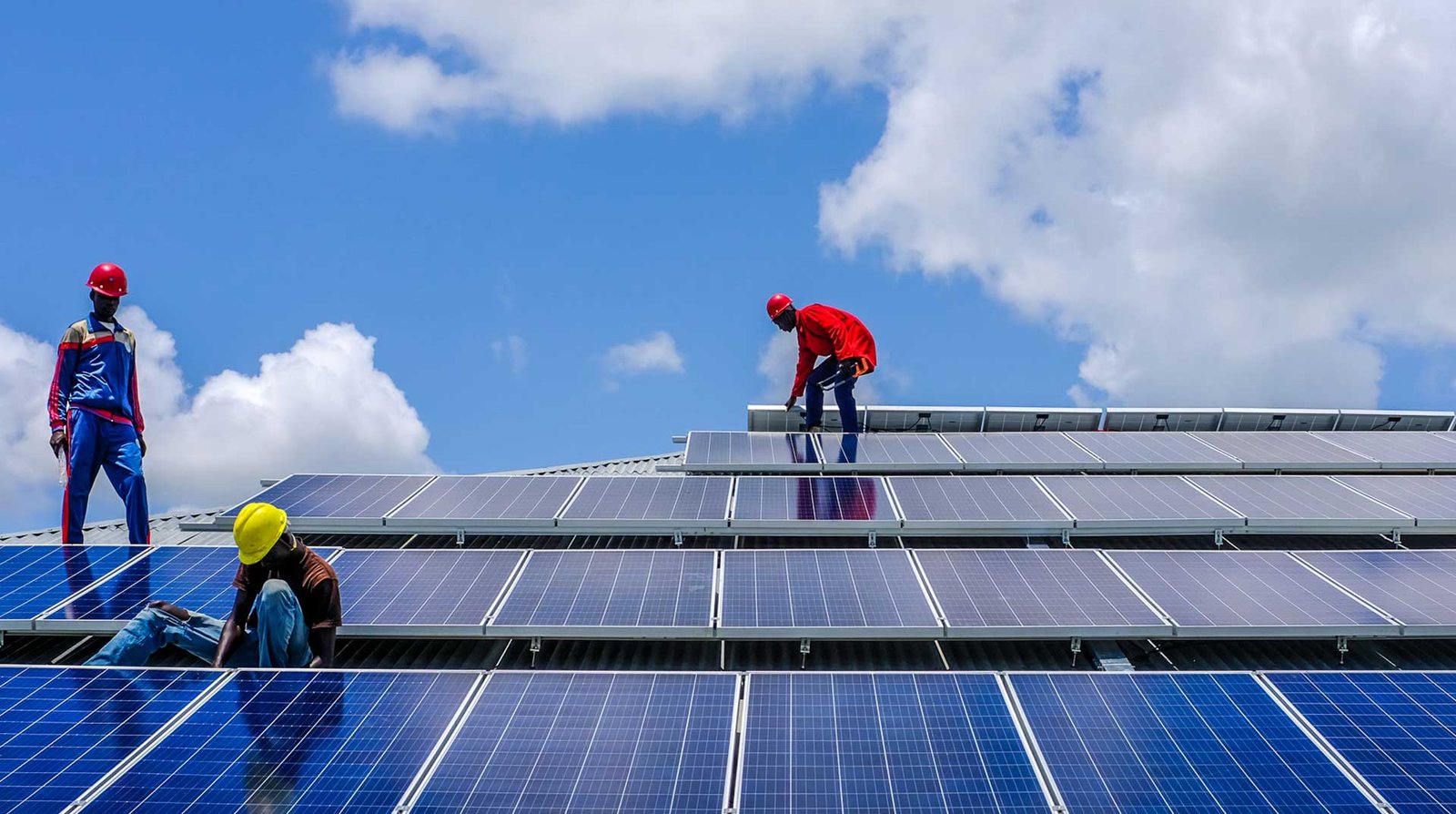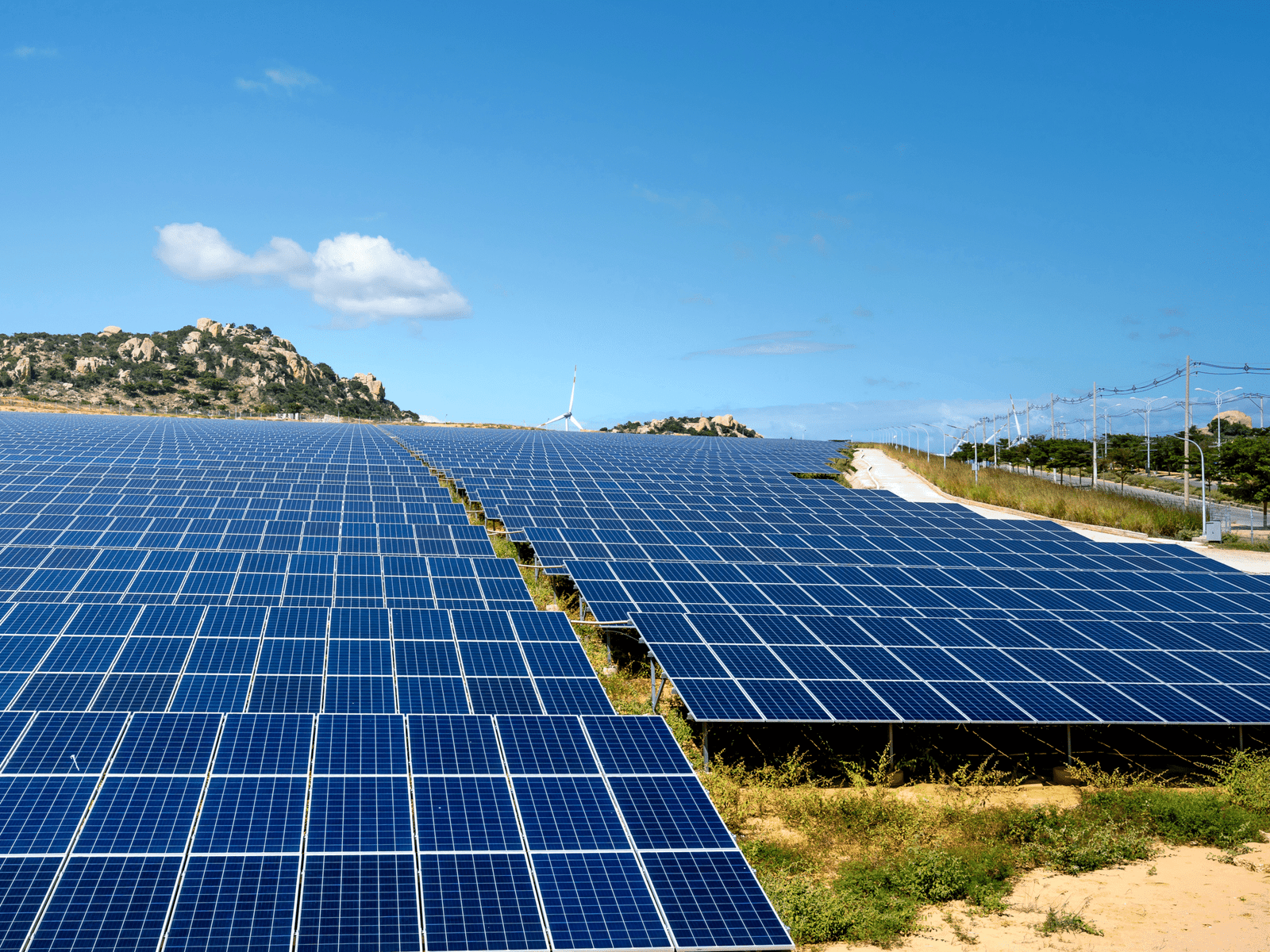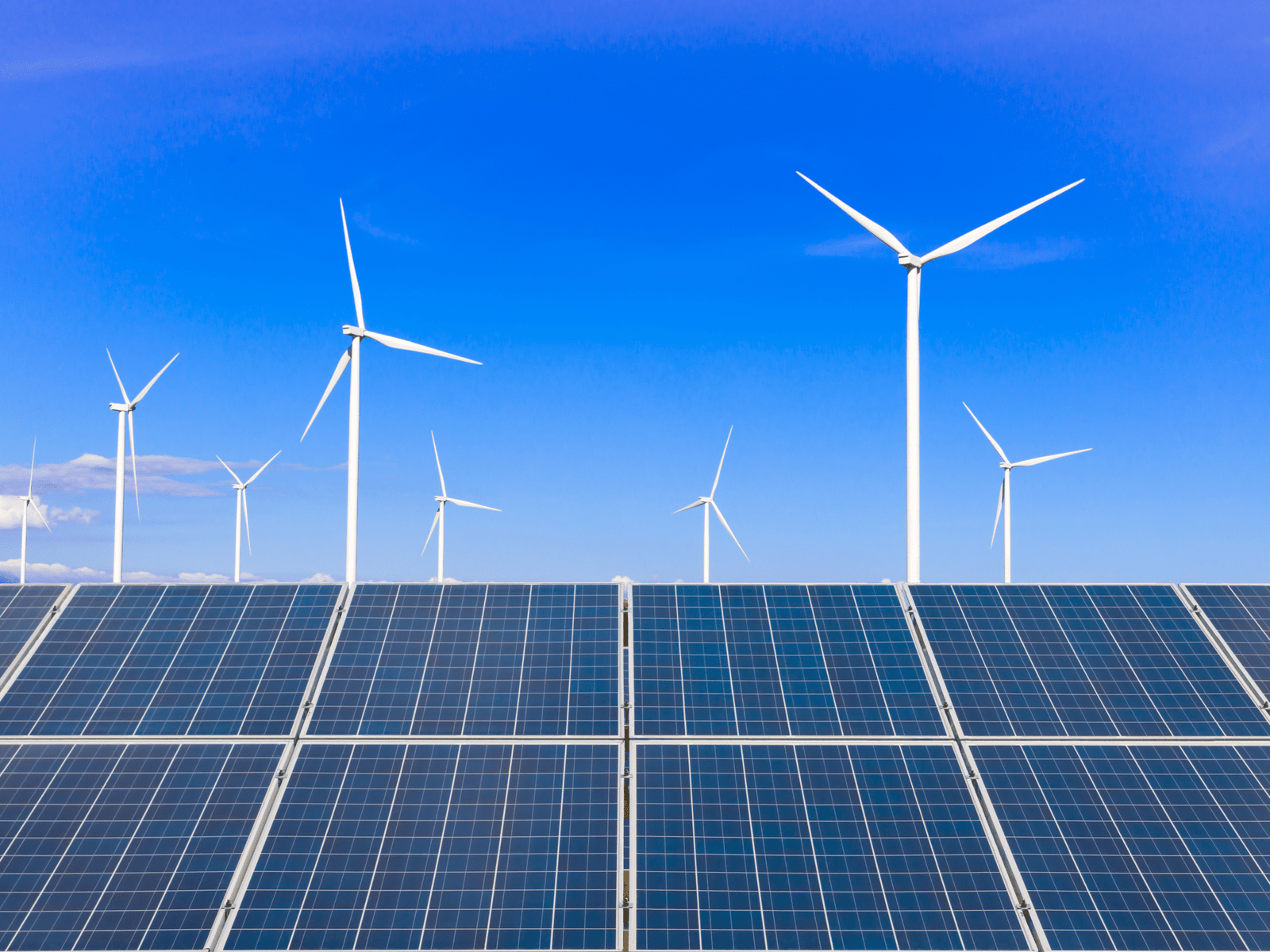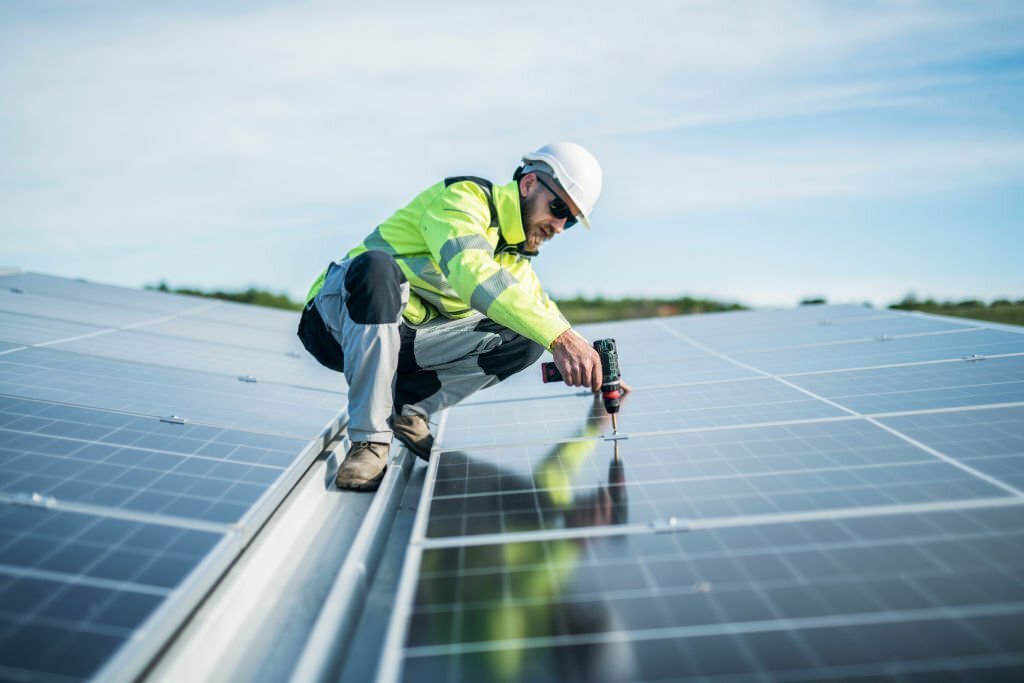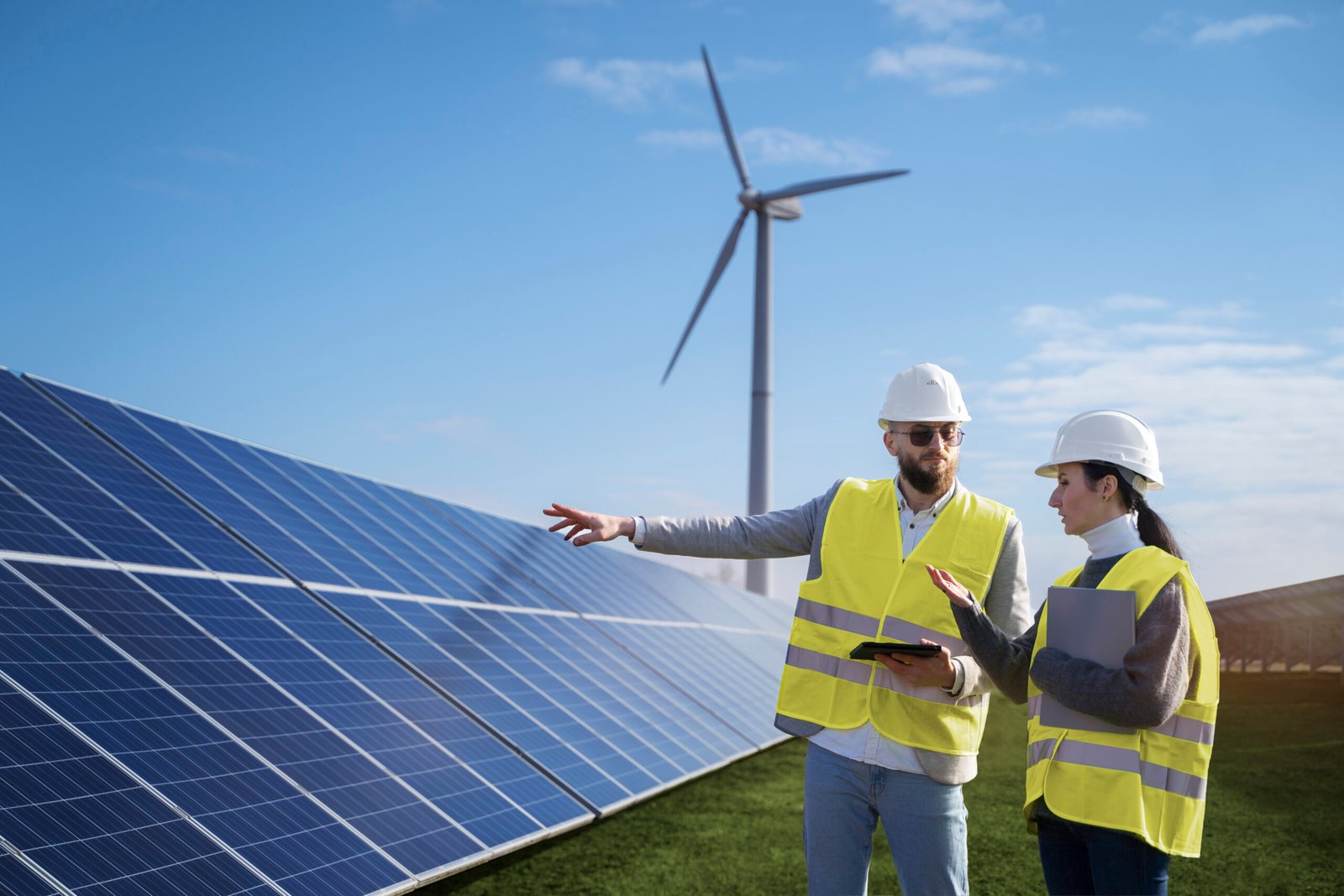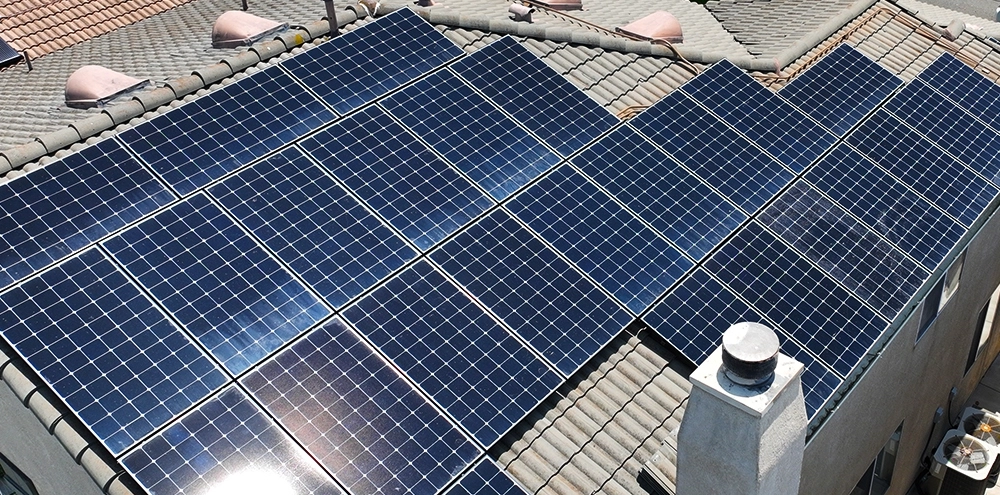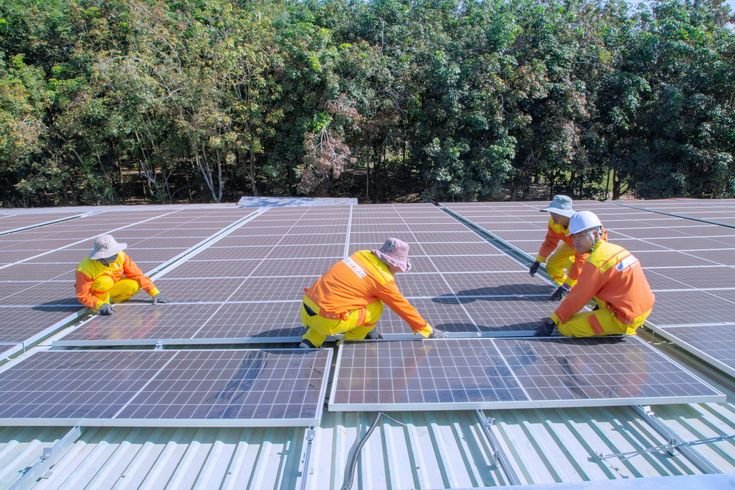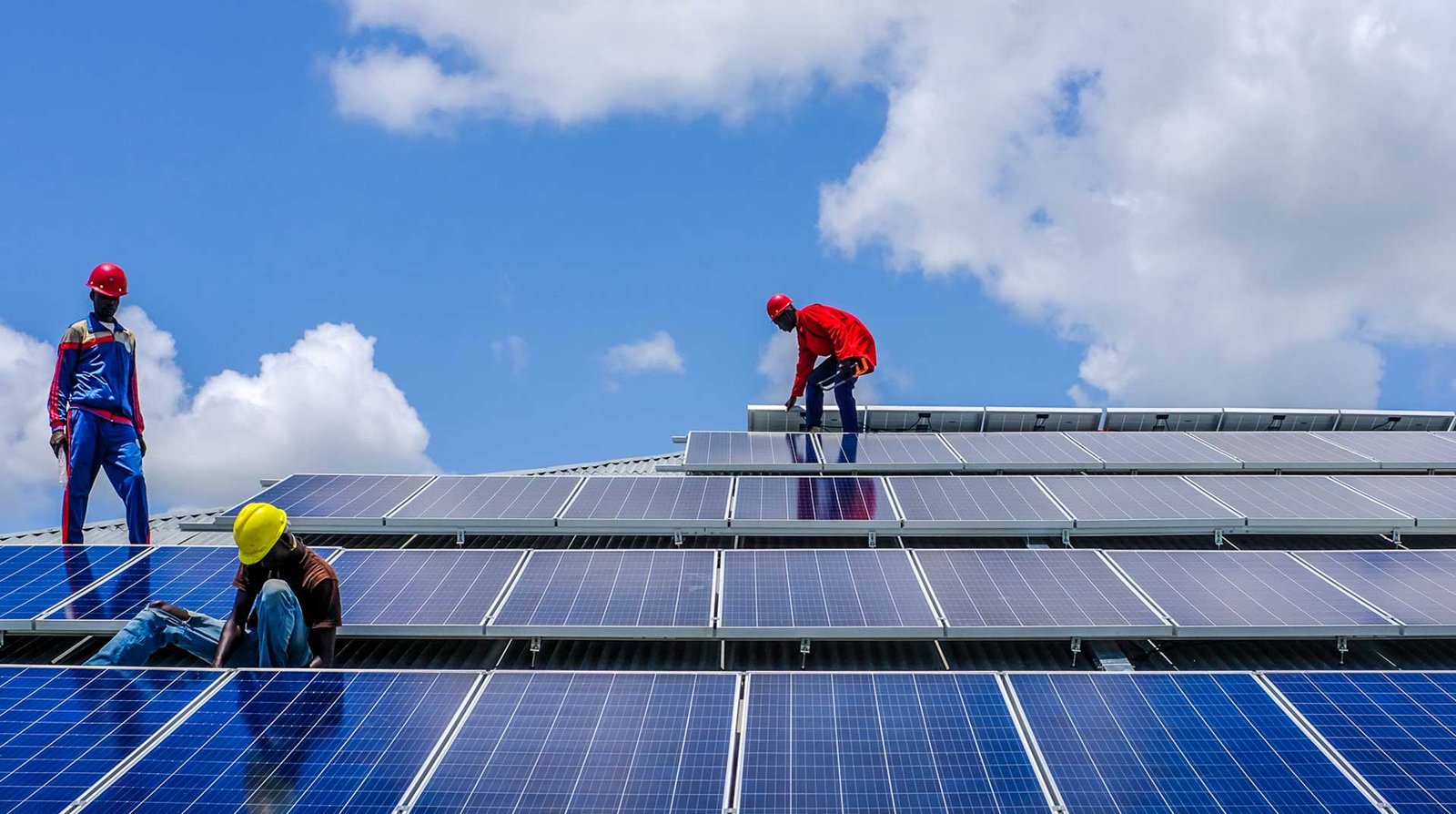Solar energy is often associated with photovoltaic (PV) panels; however, an equally crucial element is the mounting system that supports them. This system is vital for ensuring structural stability, optimizing energy production, and maintaining long-term reliability. An inadequate mounting system can lead to underperformance, damage, or safety regulation violations for even the most advanced solar panels. In the Commercial & Industrial (C&I) sectors, the mounting system is essential for achieving return on investment (ROI), enhancing operational safety, and meeting sustainability objectives.
Table of Contents
Essentially, while solar panels serve as the heart of the system, the mounting structure acts as its skeleton, ensuring alignment, strength, and efficiency. The guide will comprehensively cover solar panel mounting, including types, components, installation processes, costs, challenges, future innovations, and real-world applications.
What is Solar Panel Mounting?
Solar panel mounting, also known as PV mounting or racking, is the system that supports and secures solar panels on various surfaces such as rooftops, the ground, or facades. This framework is crucial for ensuring that solar panels are fixed at the optimal angle and orientation to capture sunlight effectively while being resilient against environmental factors.
The primary functions of solar panel mounting include:
- Positioning Panels Correctly: Ensuring panels are tilted and oriented for maximum exposure to sunlight.
- Providing Stability: Engineered to withstand various environmental pressures such as wind, rain, snow, and seismic activity.
- Ensuring Longevity: Designed to protect solar panels, enabling them to function efficiently over their expected lifespan of 25 to 30 years.
Key Functions & Purposes of Mounting Systems
1. Secure Support & Stability
The mounting structure must hold panels firmly so they resist wind loads, snow, vibration, and other environmental stresses. This avoids damage or displacement.
2. Optimal Sunlight Exposure
Mounting allows panels to be positioned at the correct tilt and orientation (angle, azimuth) so they receive maximum sunlight over the day and across seasons. Some mounts are fixed; others are adjustable or use tracking to follow the sun.
3. Longevity & Durability
The mounting materials and design must be durable (resistant to corrosion, wear, weather). They should preserve the panels’ performance for decades. Proper mounting also helps with cooling (airflow under racks) which improves efficiency.
4. Protection & Safety
A good mount prevents issues like panel breakage, roof leaks (for rooftop installations), structural failures, or safety hazards.
5. Adaptability to Site Conditions
Mounting systems must work under different site constraints: rooftop vs ground, flat vs sloped roofs, soil conditions, wind/snow load zones, etc. They often come in multiple designs to suit these.
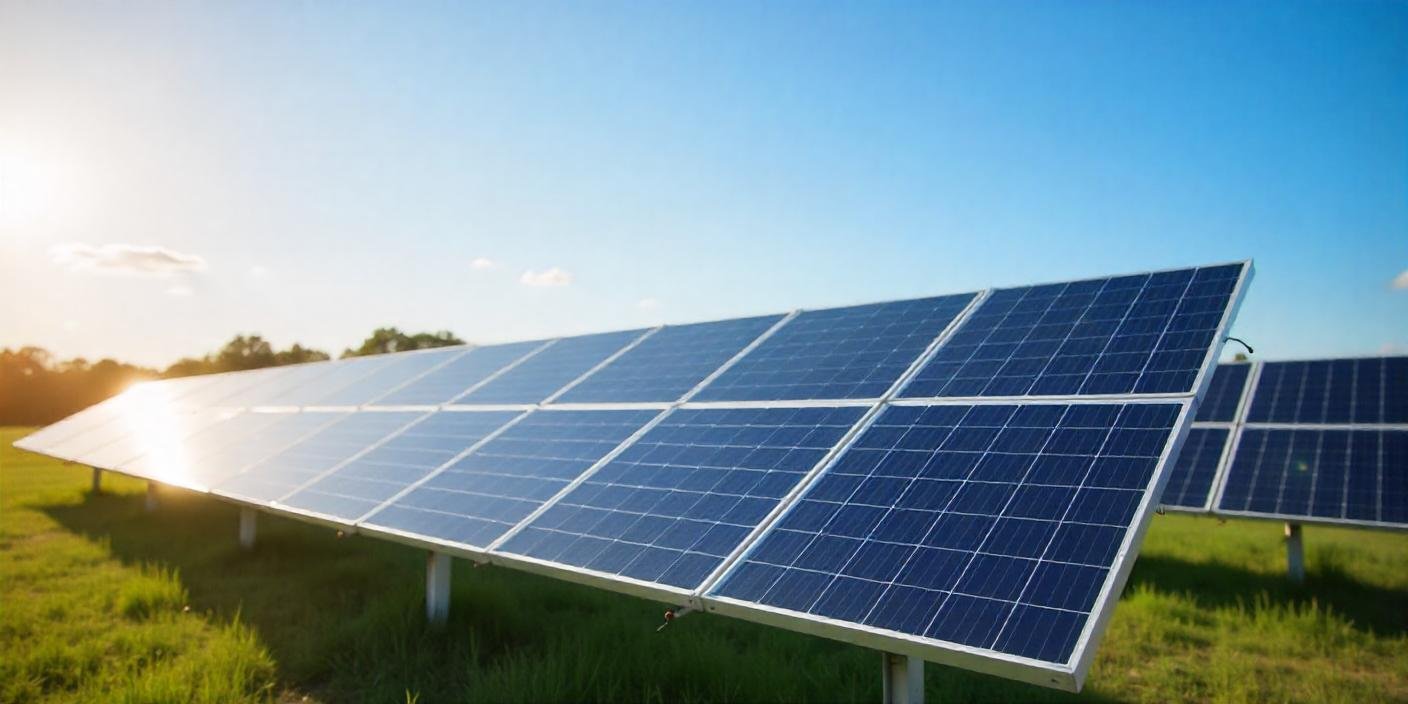
Types of Solar Panel Mounting Systems
Choosing the right mounting system depends on site conditions, project scale, and energy goals. Let’s explore the most widely used systems:
1. Rooftop Mounting Systems
Rooftop solar systems are among the most popular solutions for harnessing clean energy from otherwise unused roof spaces in residential, commercial, and industrial sectors. The primary Solar Panel Mounting approaches for rooftops include flat roof mounting and sloped roof mounting.
Flat roof systems typically use ballasted (weight-based) or anchored structures, with panels tilted on frames to maximize solar exposure. This configuration is common in warehouses, factories, and large commercial buildings. In contrast, sloped roof systems attach panels parallel to the roof’s incline, requiring specialized flashings and clamps to prevent leaks, which is mostly suitable for residential buildings.
Both flat and sloped roof Solar Panel Mounting methods use rails, clamps, or brackets, making them adaptable to different roof materials, including metal and tile. Key advantages include land conservation, the use of existing structures, and cost-effectiveness compared to ground-mounted systems. However, evaluating roof strength, waterproofing, orientation, and tilt is critical before installation.
2. Ground-Mounted Systems
Ground-mounted Solar Panel Mounting involves installing panels on the ground using structures like fixed racks, frames, poles, or footings. These can be fixed-tilt or tracking systems, allowing optimal orientation, easy maintenance, scalability, and enhanced energy output with tracking solutions.
This method requires more land and higher initial civil and foundation costs. Site factors such as soil type, topography, and wind and snow loads must be considered, along with necessary permissions or land leases. Ground-mounted systems are ideal for solar parks, utility-scale projects, and factories with large open spaces.
3. Carport Mounting
Solar panels installed over parking lots, driveways, or walkways form solar carports—a creative Solar Panel Mounting solution for commercial and industrial campuses, malls, and EV charging stations. Carports offer dual functionality by providing shade while generating electricity, and they can enhance visibility for branding and integrate EV chargers. These systems, however, involve higher structural costs and more complex permitting and design considerations.
4. Agrivoltaic Structures
Agrivoltaics, or agri-PV, combines farming with solar energy by using raised Solar Panel Mounting systems that allow crops to grow underneath. This innovative approach maximizes land efficiency, offering farmers both renewable energy and agricultural yields. Proper design ensures sunlight reaches the plants while supporting energy production.
5. Floating Solar Mounting
Floating Solar Panel Mounting systems involve installing panels on buoyant platforms over water bodies like reservoirs or lakes. This method addresses land scarcity and benefits from water cooling, which can improve panel efficiency. Challenges include anchoring, corrosion resistance, maintenance, and regulatory considerations, making it a technically advanced but highly efficient solution.
6. Building-Integrated Photovoltaics (BIPV)
BIPV systems integrate solar panels directly into building elements such as façades, windows, or roof shingles. This type of Solar Panel Mounting blends energy generation with architectural design, enhancing aesthetics and optimizing space. While generally more expensive per watt and requiring careful planning, BIPV is ideal for new constructions where visual appeal and efficient space use are priorities.
Key Components of Mounting Systems
- Mounting Rails: Mounting rails are the backbone of any solar installation, providing the structural framework that holds panels in place. They ensure proper alignment, tilt, and spacing for optimal sunlight exposure. Rails are typically made of lightweight yet durable materials such as aluminum, which resist corrosion and support long-term stability.
- Clamps and Fasteners: Clamps secure solar panels to the rails, preventing movement due to wind or other environmental forces. End clamps attach panels at the edges, while mid clamps secure panels in between. High-quality fasteners, bolts, and screws are essential for safety, longevity, and reliability of the Solar Panel Mounting system.
- Tilt and Angle Adjustment Structures: Tilt frames or adjustable brackets allow panels to be angled to capture maximum solar energy. Flat roof systems often use tilt structures, while ground-mounted or tracking systems may include dynamic mechanisms to follow the sun’s path, boosting energy efficiency.
- Foundations and Supports: Depending on the type of Solar Panel Mounting, foundations can include concrete footings, ground anchors, or ballast systems for flat roofs. Proper foundation design ensures stability under wind, snow loads, and other environmental conditions. Carports, agrivoltaic systems, and floating solar structures require specialized supports to accommodate unique layouts.
- Flashing and Waterproofing Components: For sloped roofs, flashings and sealants prevent leaks where rails or panels penetrate the roof. These components are critical for protecting the building structure while enabling safe and secure Solar Panel Mounting.
- Tracking Systems (Optional): Advanced mounting solutions may incorporate tracking systems that rotate panels to follow the sun’s movement. This increases energy generation by 15–30% compared to fixed systems, particularly valuable for large-scale ground-mounted installations.
- Junction Boxes and Cable Management Accessories: Proper cable management ensures safety, reduces wear, and maintains system aesthetics. Clips, conduits, and trays help organize wiring, preventing exposure to harsh conditions while supporting long-term efficiency.
Factors to Consider When Choosing a Mounting System
1. Roof Type and Structural Integrity
- Flat roofs typically use ballasted or anchored mounting systems; it is essential to verify that the roof can bear the additional weight without jeopardizing its structural integrity. For sloped roofs, mounts must be compatible with the roof’s pitch, and an evaluation of the roof’s age and condition is necessary to ascertain their suitability. Additionally, various roofing materials such as metal, tile, and asphalt might require specific mounting hardware to ensure proper compatibility and to avoid damage.
2. Environmental Factors
- Evaluating wind and snow loads is crucial to ensure that the mounting system can endure the prevailing regional wind speeds and potential snow accumulation. Furthermore, in environments such as coastal or industrial areas characterized by high humidity or corrosive elements, selecting corrosion-resistant materials—such as anodized aluminum or hot-dip galvanized steel—is recommended to improve the durability and longevity of the system.
3. Mounting System Type
- Fixed-tilt systems offer a straightforward design with solar panels positioned at a fixed angle, making them suitable for regions with consistent sunlight. Tracking systems provide a more complex option by adjusting the orientation of panels throughout the day to follow the sun, ultimately enhancing energy capture, albeit at increased costs and complexity. Ballasted systems utilize weight to anchor panels without roof penetrations, making them ideal for flat roofs; however, they necessitate a careful assessment of structural load capabilities.
4. Maintenance and Accessibility
- Ground-mounted solar systems or carports provide greater ease of access for maintenance than rooftop installations. Furthermore, the cleaning and inspection of panels should be considered, particularly in dusty or industrial settings, to ensure optimal performance and longevity.
5. Regulatory Compliance and Permitting
- It is essential to ensure that the selected mounting system adheres to local building codes and regulations. Additionally, certain installations, particularly those that are ground-mounted or carport-based, might necessitate particular permits to proceed legally.

Advantages of a Proper Mounting System
Implementing a well-designed solar panel mounting system is pivotal for optimizing energy production, ensuring structural integrity, and enhancing the longevity of solar installations. Below are the key benefits:
1. Enhanced Energy Efficiency
A properly installed mounting system ensures that solar panels are positioned at optimal angles and orientations, maximizing sunlight exposure. This strategic positioning significantly boosts energy capture, leading to increased system efficiency.
2. Structural Stability and Safety
Quality mounting systems provide robust support, securing panels against adverse weather conditions such as high winds and heavy snow loads. This stability is crucial for maintaining the safety and integrity of both the solar panels and the building structure.
3. Durability and Longevity
Durable mounting components, typically made from materials like aluminum or galvanized steel, protect solar panels from environmental stresses. This resilience reduces the risk of damage, thereby extending the lifespan of the entire solar energy system.
4. Optimal Airflow and Cooling
Elevated mounting systems facilitate better airflow around solar panels, aiding in natural cooling. Maintaining lower operating temperatures enhances panel performance and reduces the likelihood of overheating, which can degrade efficiency.
5. Ease of Maintenance
Accessible mounting designs simplify the cleaning and maintenance processes. Regular upkeep is essential for sustaining optimal performance and addressing issues such as dust accumulation or debris obstruction.
6. Adaptability to Various Environments
Advanced mounting systems, including tracking and bifacial setups, allow for customization based on geographic location and environmental conditions. These systems can enhance energy production by adjusting panel positioning to follow the sun’s path or by capturing reflected light from the ground.
Challenges in Solar Panel Mounting
1. Structural Integrity and Roof Load Capacity
Many commercial buildings, especially older ones, may not be structurally equipped to handle the weight of a solar energy system. Common issues include insufficient roof load capacity for solar panels and racking systems, aging materials that may require roof reinforcement or replacement before installation, and limited rooftop space for an optimally sized system. Addressing these concerns often necessitates structural assessments and potential modifications to ensure safety and performance.
2. Weather Resistance and Durability
In regions prone to extreme weather conditions, such as high winds and heavy rainfall, the durability of mounting structures becomes critical. Substandard installations using non-engineered designs and low-quality materials can fail to withstand routine weather events, leading to system damage and safety hazards. For instance, a recent storm in India revealed that several rooftop solar systems collapsed due to poor-quality installations, highlighting the importance of using engineered designs and quality materials.
3. Shading and Orientation Constraints
Shading from nearby structures or trees can significantly reduce the efficiency of solar panels. Additionally, roofs with suboptimal orientation or tilt angles may not capture maximum sunlight, leading to decreased energy production. To mitigate these issues, it’s essential to conduct a detailed site assessment to identify potential shading sources and consider panel layouts or tracking systems that optimize solar exposure.
4. Complex Installation and Maintenance
The installation of solar panel mounting systems requires skilled labor and precise execution. Improper installation can lead to issues such as roof damage, leaks, and electrical hazards. Moreover, certain mounting systems may complicate cleaning and maintenance procedures, potentially leading to reduced system performance over time. Ensuring accessibility and proper design can alleviate these challenges.
5. Regulatory Compliance and Permitting
Navigating local regulations and obtaining necessary permits can be a complex process. Failure to comply with zoning laws, building codes, and safety standards can result in project delays, fines, or even the need to dismantle installed systems. It’s crucial to work with experienced professionals who are familiar with local regulations to ensure a smooth installation process.
Step-by-Step Installation Process
1. Pre-Installation Planning
- The site assessment for solar panel installation involves evaluating the roof’s structural integrity, orientation, and shading to determine the optimal placement of panels. The system design phase includes calculating the number of panels required and selecting suitable solar panel mounting systems—whether fixed, adjustable, or tracking mounts—tailored to energy needs and specific roof characteristics. Finally, securing permits and approvals from local authorities is essential to ensure compliance with building codes and regulations.
2. Material Procurement
- Assembling a solar panel system requires careful selection of components. Key items include roof attachments, mounting rails, module clamps, and flashing kits appropriate for flat, sloped, or metal roofs. Choosing high-quality solar panels and inverters that match the system design is critical. Additionally, gathering electrical components such as wiring, connectors (like MC4), junction boxes, and safety equipment is necessary to complete the installation.
3. Roof Preparation
- Safety is paramount during installation. Scaffolding or fall protection systems should be set up to protect workers. A thorough roof inspection should be conducted to identify any damage or reinforcement needs. The roof surface must also be cleaned of debris to ensure ideal conditions for solar panel mounting.
4. Mounting System Installation
- Begin by marking the layout for roof attachments to ensure proper spacing and alignment. Install roof anchors or brackets securely, using appropriate fasteners and flashing to prevent leaks. Attach the mounting rails horizontally or vertically to the anchors, ensuring they are level and stable. Finally, install module clamps—both end and mid clamps—onto the rails, leaving space for panel expansion. This completes the foundation for solar panel mounting.
5. Solar Panel Installation
- Lift and position solar panels onto the mounted rails, aligning them with the clamps. Secure the panels by tightening the clamps, ensuring they are level and correctly aligned. Route wiring through designated channels carefully, avoiding sharp bends or potential damage points to maintain safety and performance.
6. Electrical Connections
- Connect panels in series or parallel based on system design using MC4 connectors for secure connections. Link the panel array to the inverter, maintaining correct polarity and ensuring all connections are firm. Ground the system according to electrical codes to minimize hazards. Proper solar panel mounting ensures that electrical pathways remain organized and accessible for maintenance.
7. System Testing and Commissioning
- Perform voltage and continuity checks to verify all electrical connections. Configure inverter settings according to manufacturer specifications and local grid requirements. Monitor system performance to ensure it operates within expected parameters and delivers optimal energy output.
8. Final Inspection and Documentation
- Conduct a comprehensive inspection to ensure all components, including the solar panel mounting system, are installed securely and functioning properly. Provide documentation to the client, including system manuals, warranty details, and maintenance guidelines. Additionally, train facility personnel on operating the system and handling basic troubleshooting issues if required.
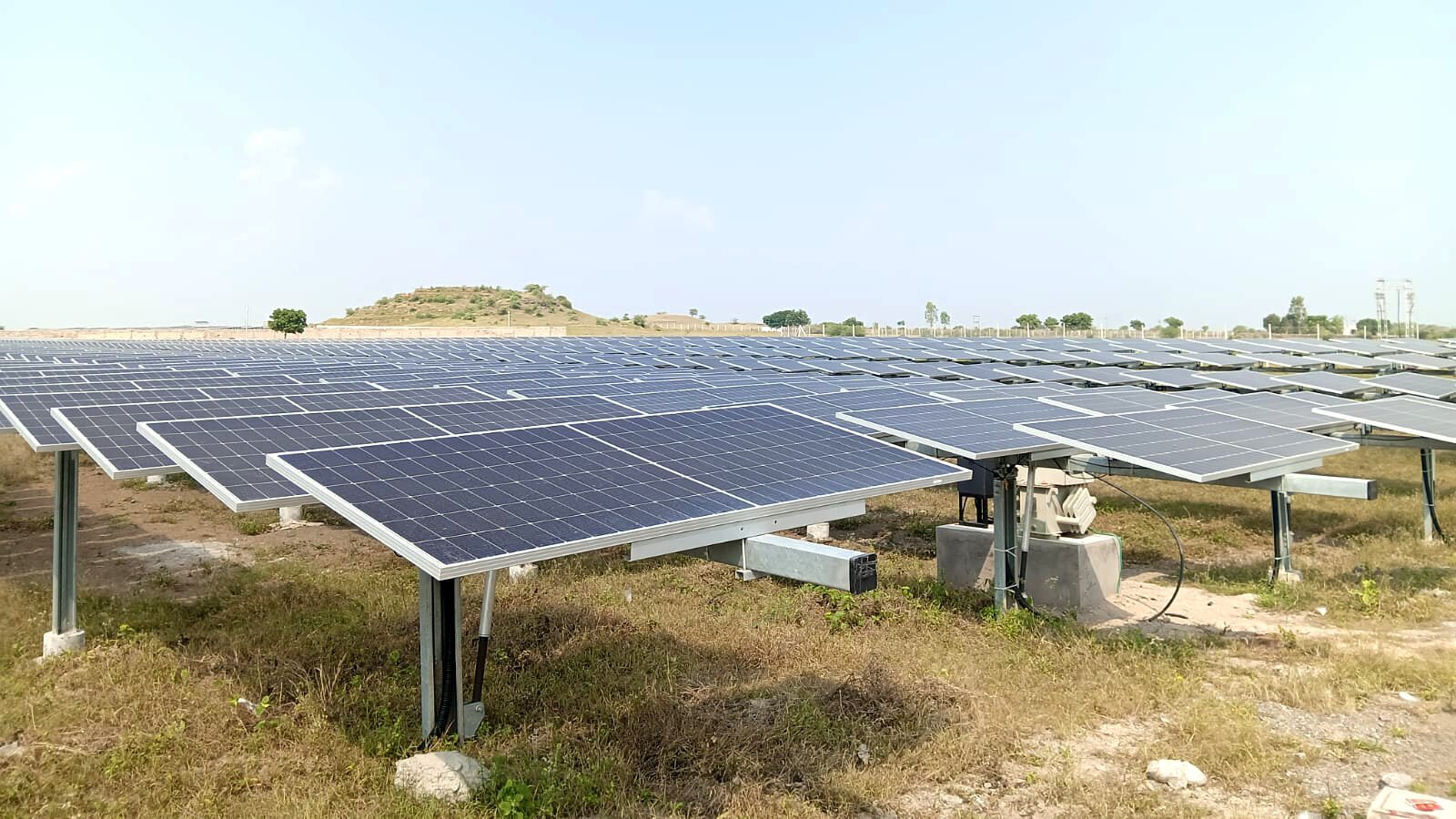
Cost of Solar Panel Mounting Systems
1. Material Costs
- Aluminum mounting structures are typically priced between ₹270 and ₹280 per kg, leading to a total cost of approximately ₹4,500 to ₹5,000 for a 1kW solar system. In contrast, steel mounting structures are usually priced around ₹80 to ₹85 per watt, resulting in a total cost of approximately ₹8,000 to ₹8,500 for a 1kW system. Ballast mounting systems have a cost of about ₹1,800 per kilowatt. Additionally, fasteners and accessories, such as end and mid clamps, vary in price from ₹62 to ₹230 each, depending on their size and material composition. Furthermore, integrating tracking systems, particularly single-axis trackers, can elevate material costs by 15% to 25% compared to fixed mounting solutions.
2. Labor Costs
- Installation charges for systems generally range from ₹5,000 to ₹8,000 per kilowatt, influenced by the complexity of the installation. Additional costs may arise for engineering and design, particularly for custom or large-scale installations, which may require structural analysis and design services.
3. Operation & Maintenance (O&M) Costs
- Annual maintenance costs range from ₹2,000 to ₹5,000 per kW each year. The maintenance services encompass various tasks, including cleaning, inspections, and minor repairs.
Future of Solar Panel Mounting Systems
The future of solar panel mounting systems is poised for significant transformation, driven by technological innovations, sustainability initiatives, and increasing energy demands. Advanced and adaptive solar panel mounting solutions, such as adjustable and tracking systems, allow panels to follow the sun’s trajectory, optimizing energy capture throughout the day. Installation efficiency is improving through lightweight materials, integrated adhesives, and pre-applied sealants, which streamline the solar panel mounting process while enhancing durability.
Sustainable designs are also gaining prominence, with recyclable materials and advanced alloys reducing environmental impact and transportation costs. Automation and digital integration further improve solar panel mounting precision, with software tools enabling optimized site analysis and layout design. Innovative applications, including solar carports and installations between railway tracks, maximize the use of underutilized spaces, generating renewable energy without disrupting existing infrastructure. These developments indicate that solar panel mounting systems will become more efficient, durable, and essential to the global adoption of solar energy.
Conclusion
In conclusion, the choice of a solar panel mounting system is far more than a structural decision—it is the backbone of any successful solar energy project. From rooftops and ground-mounted systems to carports, floating platforms, and agrivoltaic solutions, the mounting infrastructure plays a pivotal role in ensuring optimal energy capture, system durability, and long-term return on investment. Each mounting solution comes with its unique advantages and challenges, whether it’s maximizing unused rooftop space, leveraging open land for large-scale solar parks, integrating with agricultural practices, or innovating with floating and building-integrated photovoltaics.
As the solar industry continues to evolve, incorporating adaptive technologies, recyclable materials, and smart tracking systems into solar panel mounting solutions has become essential for efficiency, sustainability, and scalability. A well-engineered mounting system not only enhances energy generation but also reduces maintenance costs and safeguards the panels against environmental stressors like wind, rain, and corrosion. For businesses, industrial facilities, and large-scale projects, the decision to invest in high-quality solar panel mounting infrastructure directly impacts performance, safety, and the longevity of your solar installation.
Take the Next Step Toward a Sustainable Future: Don’t leave your solar project to chance. Partner with our expert team to design, procure, and install the perfect solar panel mounting system tailored to your facility’s unique needs. From consultation and feasibility studies to installation, commissioning, and maintenance, we provide end-to-end solutions that maximize efficiency, minimize costs, and help your business harness the full potential of solar energy. Start your journey toward reliable, clean, and cost-effective solar power today and secure a smarter, greener energy future for your facility.
Frequently Asked Questions (FAQs) on Solar Panel Mounting Systems
1. What are solar panel mounting systems?
Solar panel mounting systems are structural frameworks designed to secure solar panels to roofs, walls, or the ground. They ensure the panels are positioned at optimal angles for sunlight exposure, providing stability and durability against environmental factors.
2. What types of solar panel mounting systems are available?
There are primarily three types:
- Roof-Mounted Systems: Ideal for residential and commercial buildings, utilizing existing roof space.
- Ground-Mounted Systems: Suitable for areas with ample land, offering flexibility in panel orientation.
- Pole-Mounted Systems: Elevated mounts that can reduce shading and are often used in open fields.
3. How do I choose the right mounting system for my property?
Factors to consider include roof type, available space, local climate conditions, and aesthetic preferences. Consulting with a professional installer can help determine the most suitable system for your needs.
4. What materials are commonly used in mounting systems?
Mounting systems are typically constructed from corrosion-resistant materials such as aluminum and stainless steel to withstand various weather conditions and ensure longevity.
5. How do mounting systems affect the efficiency of solar panels?
Properly designed mounting systems ensure panels are positioned at optimal angles, reducing shading and maximizing sunlight exposure, thereby enhancing energy efficiency.
